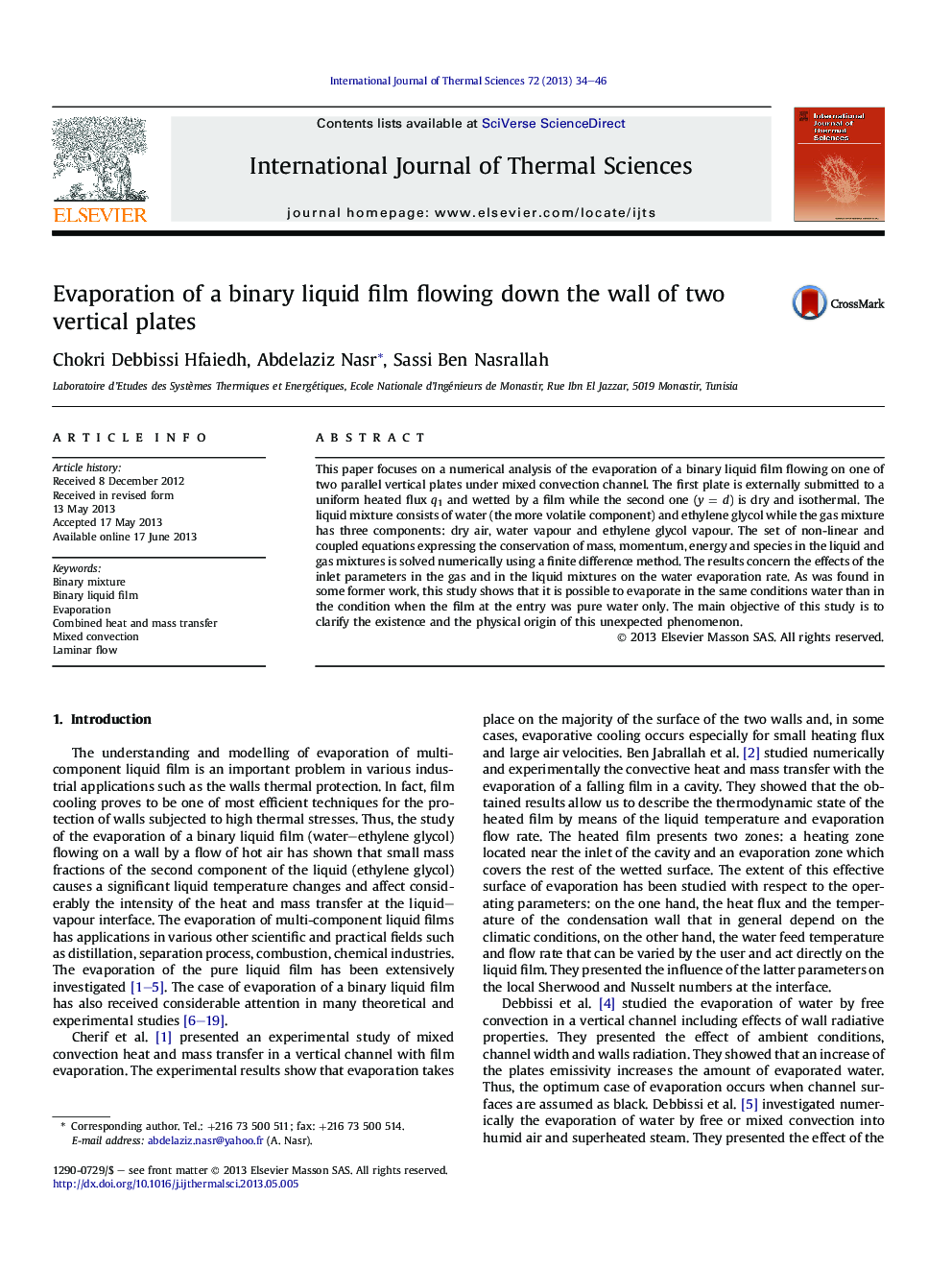| Article ID | Journal | Published Year | Pages | File Type |
|---|---|---|---|---|
| 668374 | International Journal of Thermal Sciences | 2013 | 13 Pages |
•From an inversion distance, it is possible to evaporate more water than if the film was pure water.•From a concentration of ethylene glycol, it is possible to evaporate more water than if the film was pure water.•The existence of the inversion distance ξ* depends on the inlet parameters.•The existence of the inversion concentration c* essentially depends on the heat flux density.
This paper focuses on a numerical analysis of the evaporation of a binary liquid film flowing on one of two parallel vertical plates under mixed convection channel. The first plate is externally submitted to a uniform heated flux q1 and wetted by a film while the second one (y = d) is dry and isothermal. The liquid mixture consists of water (the more volatile component) and ethylene glycol while the gas mixture has three components: dry air, water vapour and ethylene glycol vapour. The set of non-linear and coupled equations expressing the conservation of mass, momentum, energy and species in the liquid and gas mixtures is solved numerically using a finite difference method. The results concern the effects of the inlet parameters in the gas and in the liquid mixtures on the water evaporation rate. As was found in some former work, this study shows that it is possible to evaporate in the same conditions water than in the condition when the film at the entry was pure water only. The main objective of this study is to clarify the existence and the physical origin of this unexpected phenomenon.
